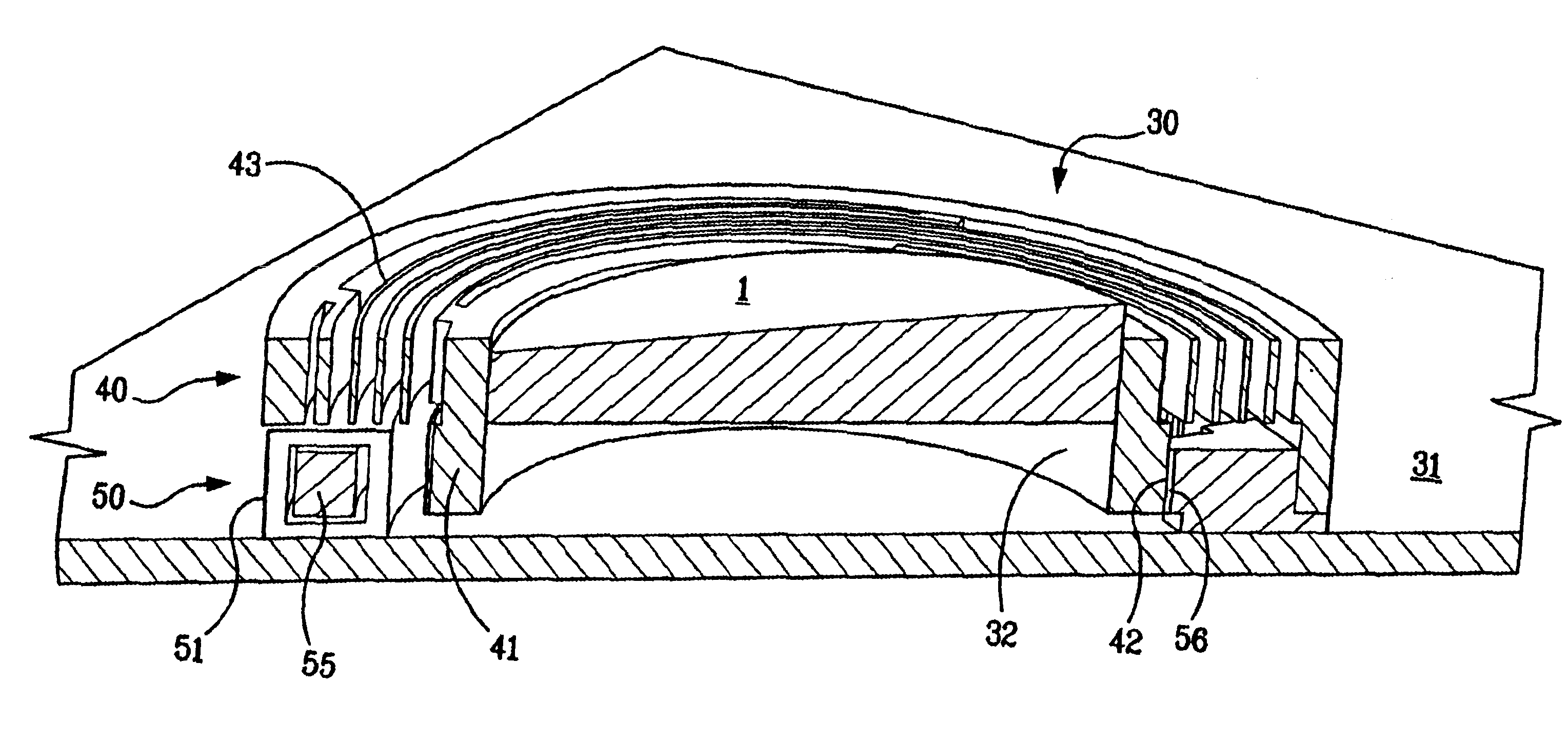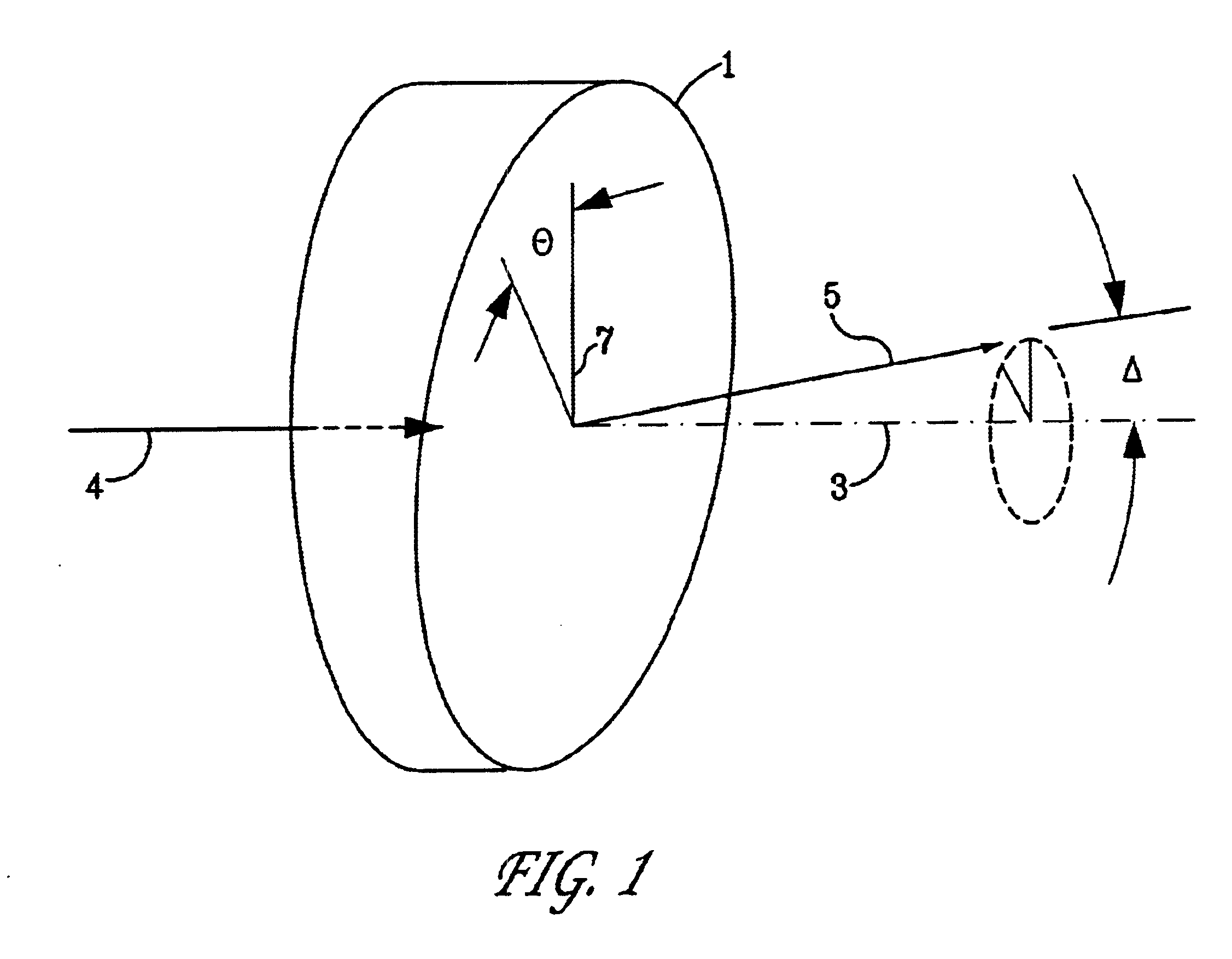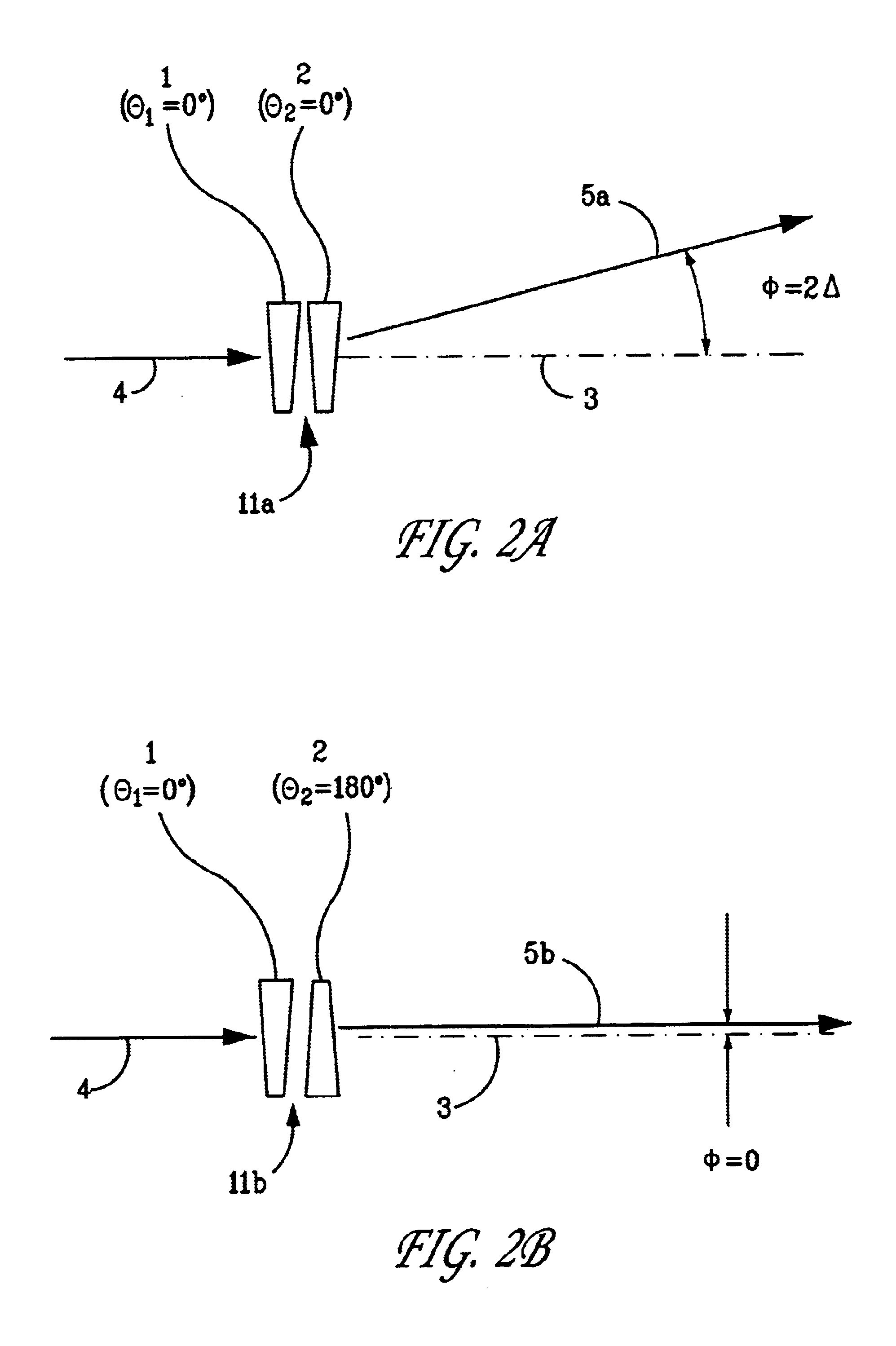Optical switch using risley prisms
a technology of optical switch and prism, applied in the field of optical switch, can solve the problems of slow and complex electronic switching, inability to adapt to the large increase in network bandwidth, and inability to achieve the effect of precise, independent rotation
- Summary
- Abstract
- Description
- Claims
- Application Information
AI Technical Summary
Benefits of technology
Problems solved by technology
Method used
Image
Examples
Embodiment Construction
The invention comprises an optical switch comprising two or more Risley prism pairs for selectively switching an incident light beam from any input fiber of a plurality of input optical fibers to any output fiber of a plurality of output optical fibers. The optical switch uses independent rotation of each wedge prism of input and output Risley prism pairs to redirect the incident light beam to a selected output fiber. The invention further comprises a rotary microactuator that can be formed integrally with each wedge prism for precise rotation thereof. The rotary microactuator can be fabricated by a seven-layer LIGA process. The integral wedge prism can be fabricated by a DXRL process. The optical switch using Risley prisms and a method for fabricating the optical switch and the rotatable wedge prism assembly are described below.
Optical Design of the Optical Switch
A prism can be used to change the direction of propagation of an incident beam of light. As shown in FIG. 1, a wedge pri...
PUM
 Login to View More
Login to View More Abstract
Description
Claims
Application Information
 Login to View More
Login to View More - R&D
- Intellectual Property
- Life Sciences
- Materials
- Tech Scout
- Unparalleled Data Quality
- Higher Quality Content
- 60% Fewer Hallucinations
Browse by: Latest US Patents, China's latest patents, Technical Efficacy Thesaurus, Application Domain, Technology Topic, Popular Technical Reports.
© 2025 PatSnap. All rights reserved.Legal|Privacy policy|Modern Slavery Act Transparency Statement|Sitemap|About US| Contact US: help@patsnap.com



